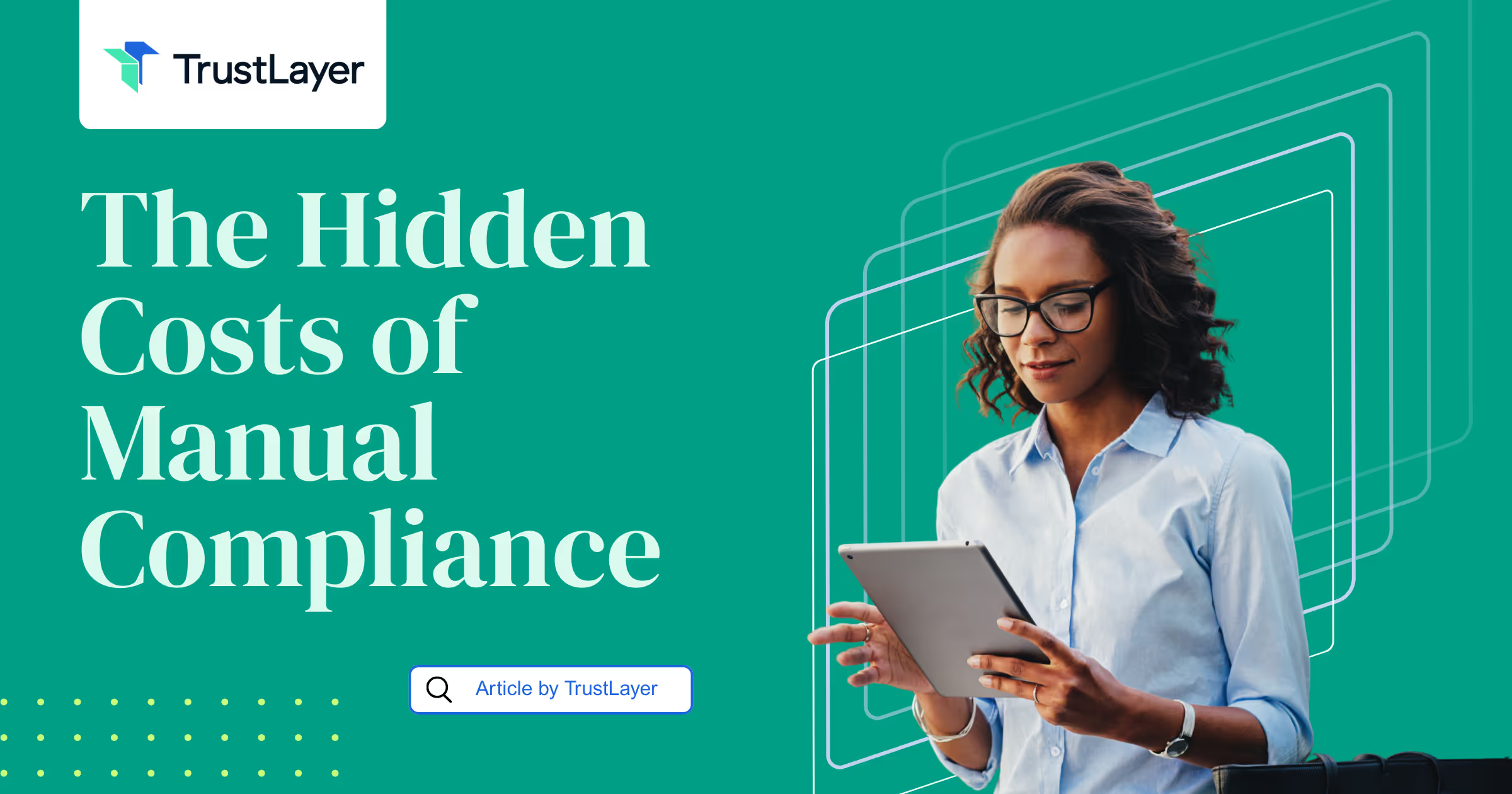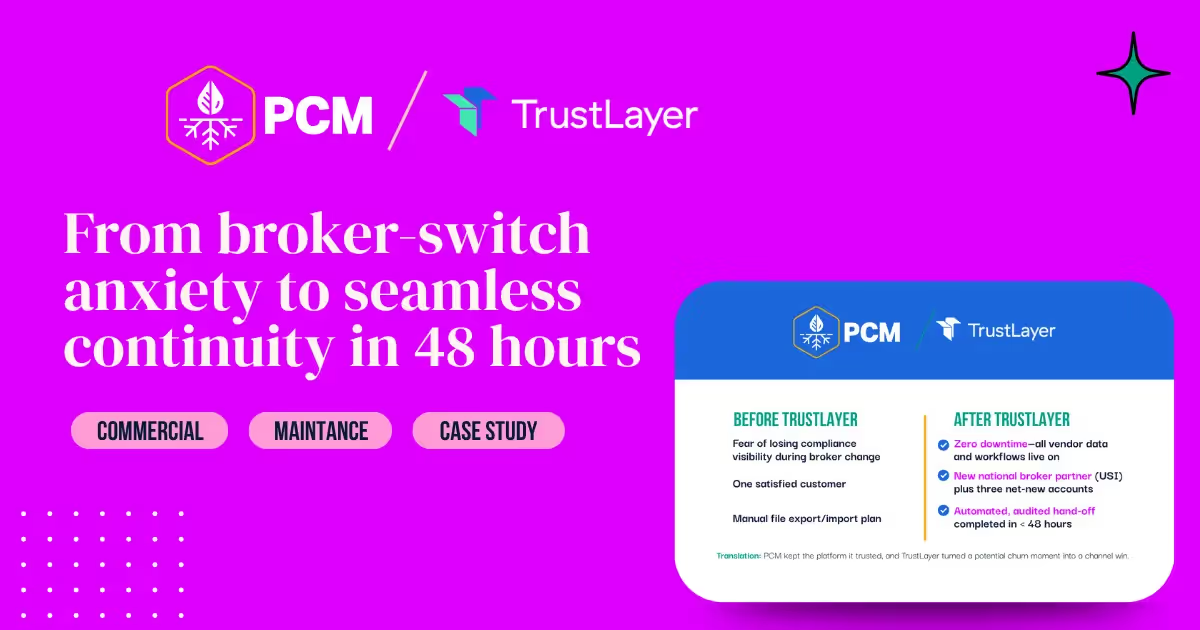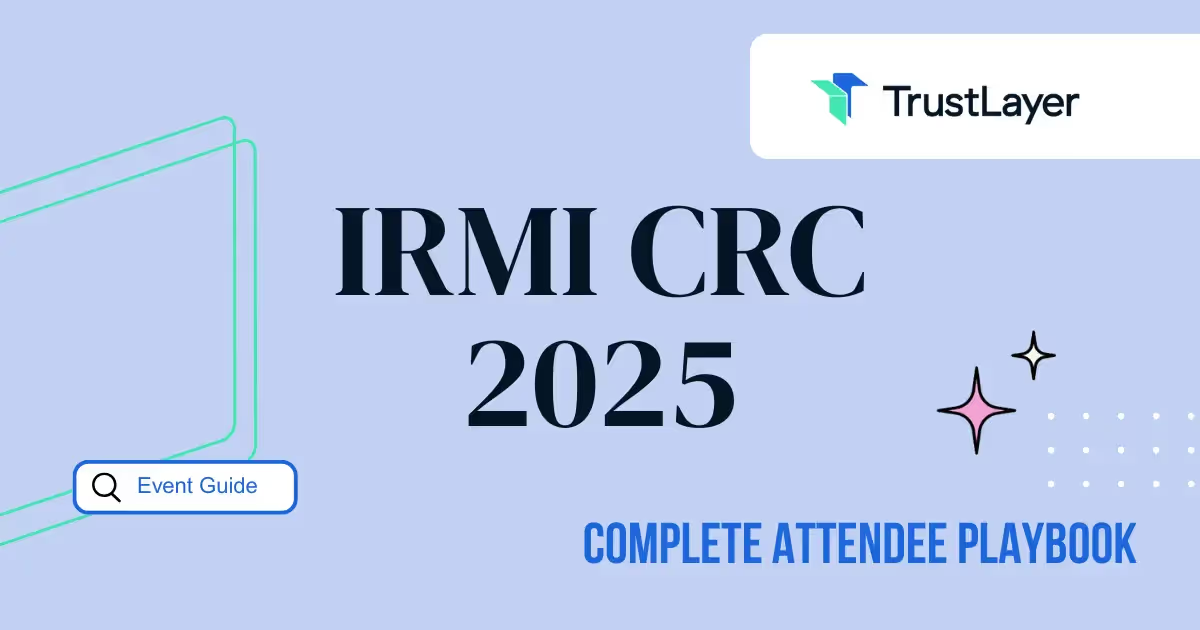A Comprehensive Guide to Using a COI Tracker

Are you tired of wasting hours searching through paperwork to find the right certificates of insurance (COIs)? Do you often find yourself questioning whether your vendors actually have the necessary insurance coverage? If so, then it's time to discover the power of a COI tracker. In this comprehensive guide, we will explore the basics of a COI tracker, delve into its key features, provide step-by-step implementation tips, and discuss how to maximize its benefits. So, let's dive in!
Understanding the Basics of a COI Tracker
A COI tracker is a software or online tool designed to streamline the process of managing certificates of insurance. It provides a centralized platform where businesses can digitally store, track, and verify COIs from their vendors. With a COI tracker, you can easily access, review, and monitor the insurance coverage of your vendor network, minimizing the risk of working with underinsured or non-compliant vendors.
But what exactly is a certificate of insurance (COI)? A COI is a document that serves as proof of insurance coverage. It outlines the types and limits of insurance held by a vendor or contractor, providing important information about their risk management practices. COIs typically include details such as the policyholder's name, policy number, coverage limits, and effective dates.
Now, let's delve deeper into the importance of a COI tracker in business.
Importance of a COI Tracker in Business
The importance of a COI tracker cannot be overstated. In today's complex business landscape, managing vendor risk is crucial for maintaining compliance and protecting your organization from financial losses. According to a recent study, businesses without a reliable COI tracking solution face a 58% higher risk of incurring losses due to vendor-related insurance issues.
One of the key benefits of using a COI tracker is the ability to easily access and review COIs from your vendor network. Instead of manually sifting through stacks of paper documents or searching through multiple email threads, a COI tracker allows you to store all your COIs in a digital format. This not only saves time but also ensures that you have quick and convenient access to the necessary information whenever you need it.
Furthermore, a COI tracker enables you to monitor the insurance coverage of your vendors in real-time. You can set up automated notifications and reminders to ensure that you are always aware of any changes or updates to your vendors' insurance policies. This proactive approach helps you stay on top of potential risks and take appropriate actions to mitigate them.
Another advantage of using a COI tracker is the ability to verify the authenticity and validity of COIs. With the increasing prevalence of fraudulent or expired COIs, it is crucial to have a reliable system in place to verify the accuracy of the insurance information provided by your vendors. A COI tracker can integrate with insurance databases and perform real-time checks to ensure that the COIs you receive are legitimate and up-to-date.
Moreover, a COI tracker can help you ensure compliance with contractual requirements and industry regulations. Many businesses have specific insurance requirements that vendors must meet in order to work with them. By using a COI tracker, you can easily track and enforce these requirements, reducing the risk of non-compliance and potential legal issues.
Lastly, a COI tracker provides valuable insights and analytics that can help you make informed decisions about your vendor relationships. By analyzing the data captured in the COI tracker, you can identify trends, assess the overall risk profile of your vendors, and identify areas for improvement in your risk management processes.
In conclusion, a COI tracker is an essential tool for businesses looking to effectively manage vendor risk and ensure compliance with insurance requirements. By centralizing and digitizing the COI management process, a COI tracker simplifies the task of tracking, reviewing, and verifying insurance coverage, ultimately minimizing the potential financial and legal risks associated with working with vendors.
Key Features of a COI Tracker
A COI (Certificate of Insurance) tracker is a powerful tool that helps organizations manage their vendors' insurance policies and ensure compliance with their requirements. While the basic functionality of a COI tracker is to track and monitor COIs, there are several key features that make it an indispensable asset for any organization.
Compliance Management
One of the most critical functions of a COI tracker is compliance management. It ensures that your vendors' insurance policies meet your organization's requirements. With automated notifications and alerts, you can proactively track expiring COIs and ensure that your vendors maintain adequate coverage at all times. This feature alone can save you countless hours of manual monitoring and reduce the chances of working with non-compliant vendors.
Furthermore, a comprehensive COI tracker allows you to define specific compliance criteria for different types of vendors. This means that you can tailor the requirements based on the nature of the services provided, the level of risk associated with the vendor, and other relevant factors. By having granular control over compliance management, you can ensure that each vendor meets the necessary standards.
Risk Assessment Capabilities
A robust COI tracker should also offer risk assessment capabilities. By analyzing and categorizing vendors based on their insurance coverage and risk levels, you can prioritize your due diligence efforts. This feature allows you to focus on high-risk vendors, perform deeper assessments, and mitigate potential liabilities. Studies show that businesses that implement risk assessment tools through COI trackers experience up to a 40% reduction in vendor-related risks.
Moreover, a sophisticated COI tracker can integrate with external risk assessment databases and provide real-time risk scores for each vendor. This integration enhances the accuracy and efficiency of risk assessment, enabling you to make data-driven decisions when selecting and managing vendors.
Reporting and Analytics
Tracking the status and performance of your vendor network is essential for making informed business decisions. A COI tracker with advanced reporting and analytics capabilities provides valuable insights into your vendor's insurance trends, compliance levels, and potential areas of improvement. With these actionable insights at your fingertips, you can optimize your vendor management strategies and minimize potential vulnerabilities.
Through customizable reports and interactive dashboards, a comprehensive COI tracker allows you to visualize key metrics and identify patterns or anomalies in your vendor network. For example, you can generate reports on the percentage of vendors with expiring COIs, the average time taken to renew COIs, or the distribution of vendors across different risk categories. These reports not only help you monitor compliance but also enable you to identify areas where you can negotiate better insurance terms or streamline your vendor management processes.
In conclusion, a COI tracker is more than just a tool for managing and monitoring COIs. It offers a wide range of features that enhance compliance management, enable effective risk assessment, and provide valuable insights through reporting and analytics. By implementing a comprehensive COI tracker, organizations can streamline their vendor management processes, reduce risks, and make informed decisions to protect their interests.
Steps to Implement a COI Tracker
Implementing a COI (Certificate of Insurance) tracker can greatly streamline your vendor management process and help ensure compliance with insurance requirements. By accurately tracking and managing COIs, you can mitigate risks, protect your organization, and maintain strong relationships with your vendors. In this guide, we will walk you through the key steps to successfully implement a COI tracker.
Identifying Your Needs
Prior to implementing a COI tracker, it's crucial to assess your organization's specific needs. Consider factors such as the size of your vendor network, the complexity of your insurance requirements, and your existing technological infrastructure. Understanding your needs will help you choose the right COI tracker that aligns with your business goals and maximizes efficiency.
For example, if you have a large vendor network with diverse insurance requirements, you may need a COI tracker that offers advanced customization options. On the other hand, if your vendor network is relatively small and your insurance requirements are straightforward, a simpler COI tracker may suffice.
Additionally, evaluate your existing technological infrastructure to ensure compatibility with the COI tracker you choose. Integration with your existing systems, such as your vendor management software or accounting software, can streamline processes and minimize manual data entry.
Choosing the Right COI Tracker
When selecting a COI tracker, there are several factors to consider. Look for a solution that offers customizable features, user-friendly interface, and reliable customer support. A customizable COI tracker allows you to tailor the software to your specific needs, ensuring that it aligns with your unique requirements and workflows.
Furthermore, a user-friendly interface is essential for easy adoption and efficient use. The COI tracker should have intuitive navigation, clear instructions, and a visually appealing design. This will help your team quickly adapt to the new software and minimize the learning curve.
Reliable customer support is another crucial aspect to consider. Choose a COI tracker provider that offers responsive customer support, whether it's through phone, email, or live chat. This will ensure that you have assistance whenever you encounter technical issues or have questions about the software's functionality.
Additionally, ensure that the COI tracker integrates seamlessly with your existing systems. This integration can save time and reduce errors by automatically syncing data between different platforms. It's also important to verify that the COI tracker has robust security measures in place to protect your sensitive data. Look for features such as encryption, user access controls, and regular data backups.
According to industry surveys, TrustLayer consistently emerges as the preferred choice for COI tracking. With its comprehensive functionality, customizable features, and excellent user reviews, TrustLayer has established itself as a leading provider in the market.
Training Your Team
Implementing a COI tracker requires proper training and education for your team. Invest in comprehensive training sessions to familiarize your employees with the software, its features, and best practices for vendor management.
During the training sessions, emphasize the importance of accurate and up-to-date COI tracking. Explain how the COI tracker will streamline processes, improve compliance, and reduce risks. Provide hands-on demonstrations and interactive exercises to ensure that your team members are comfortable using the software.
Encourage open communication and address any concerns or questions your team may have. By involving them in the implementation process, you can foster a sense of ownership and increase their commitment to using the COI tracker effectively.
Furthermore, consider providing ongoing support and resources to help your team continuously improve their COI tracking skills. This can include regular refresher training sessions, access to user manuals or online tutorials, and a designated point of contact for any software-related inquiries.
By empowering your team with the knowledge and skills to effectively use the COI tracker, you can ensure a smooth transition and seamless integration into your existing workflows.
Maximizing the Benefits of a COI Tracker
Regular Updates and Maintenance
Once you have implemented a COI tracker, it's essential to perform regular updates and maintenance to keep it running smoothly. Stay up to date with the latest software versions and security patches. Regularly review and fine-tune your COI tracking workflows to adapt to evolving business needs. By investing time and effort into maintaining your COI tracker, you can continue to reap the benefits of streamlined vendor management.
Integrating with Other Systems
To further enhance the functionality of your COI tracker, consider integrating it with other systems within your organization. For example, integrating your COI tracker with your vendor onboarding system can automate the entire COI collection process, reducing manual data entry and improving data accuracy. This integration can also help streamline your vendor approval workflows and ensure that only insured vendors gain access to your business.
Utilizing Advanced Features
A COI tracker is more than just a repository for insurance documents. Explore the advanced features offered by your chosen COI tracker to unlock its full potential. For instance, some COI trackers offer features like AI-powered document parsing, real-time compliance monitoring, and vendor performance benchmarking. By leveraging these advanced features, you can further optimize your vendor management processes and gain a competitive edge.
In conclusion, a COI tracker is a game-changer for businesses seeking to streamline their vendor management processes, minimize risks, and protect their bottom line. By understanding the basics, exploring key features, implementing best practices, and maximizing the benefits, you can harness the full power of a COI tracker. Remember, choosing the right COI tracker is crucial, and TrustLayer emerges as a preferred solution due to its comprehensive functionality and excellent user reviews. So, take the leap and propel your business towards efficient vendor management with a COI tracker today!
















